Benefits Of Lawn Aeration For Lush Green Turf
Have you ever wondered why your lawn looks dull and thin? What if skipping aeration (making tiny holes in the soil) is the culprit?
When you skip this simple task, dirt gets packed so tight that water pools on top and roots start to suffocate. Your grass pales and bare spots appear.
But grab a core aerator (that’s a tool that pulls out small plugs of soil) and poke holes all over your yard. Suddenly the ground can breathe and drink like a sponge. You’ll see water soaking in evenly and grass turning a brighter green, sometimes overnight. Wow.
Aerating now sets you up for deeper roots, fewer dry patches, and a yard that stands strong through hot days and heavy foot traffic.
Benefits Of Lawn Aeration For Lush Green Turf
Lawn aeration, also called aerification (making small holes to let air in), is when you create tiny ¼ to ¾ inch holes in your turf (lawn grass). Think of it like poking the ground so it can breathe and drink better.
Heavy rain and constant foot traffic can pack soil so tight that roots can’t breathe or drink. That’s soil compaction (soil squashed tight so roots struggle). Core aerators pull out plugs about 2½ inches deep. You’ll feel the warm earth crumble between your fingers when the plugs come out.
You’ll see results fast. Water soaks in instead of pooling on top. Grass looks greener almost right away. Here’s what you can expect:
- Water soaks in evenly, so no more dry spots.
- Grass blades perk up as air moves through.
- Color revives quickly when roots gulp nutrients.
And the perks keep growing. Over the next weeks and months, your lawn builds stronger roots that anchor each blade more firmly. Those deeper roots help your grass stay green during dry spells. Better drainage also keeps fungus-loving moisture at bay.
By the way, my dog thinks fresh holes make the best mini tunnels, oops, I mean plugs! But back to your yard: regular aeration helps turf fight stress, crowd out weeds, and grow dense over time. Give your lawn this simple service, and soon mowing and watering will feel almost effortless.
Relieving Soil Compaction with Lawn Aeration
Have you ever felt your shovel hit something as hard as a brick? That’s compacted soil. Ground packed so tight by constant footsteps, kids and pets running wild, pounding rainstorms, or heavy clay, that air, water, and nutrients can’t sneak down to your grass roots. Your shovel grinds, you grunt, and your lawn stays thirsty.
But here’s the trick: aeration. A core aerator (the machine with hollow tines) pulls tiny plugs of soil out and leaves neat little holes. Those holes break up compaction (soil pressed too tight) so roots can dive deep and rainwater can soak in instead of sliding off. By the way, my dog thinks those plugs are a snack, so keep ’em away and your lawn will thank you with a thicker, greener carpet.
Boosting Nutrient Uptake and Thatch Control through Aeration
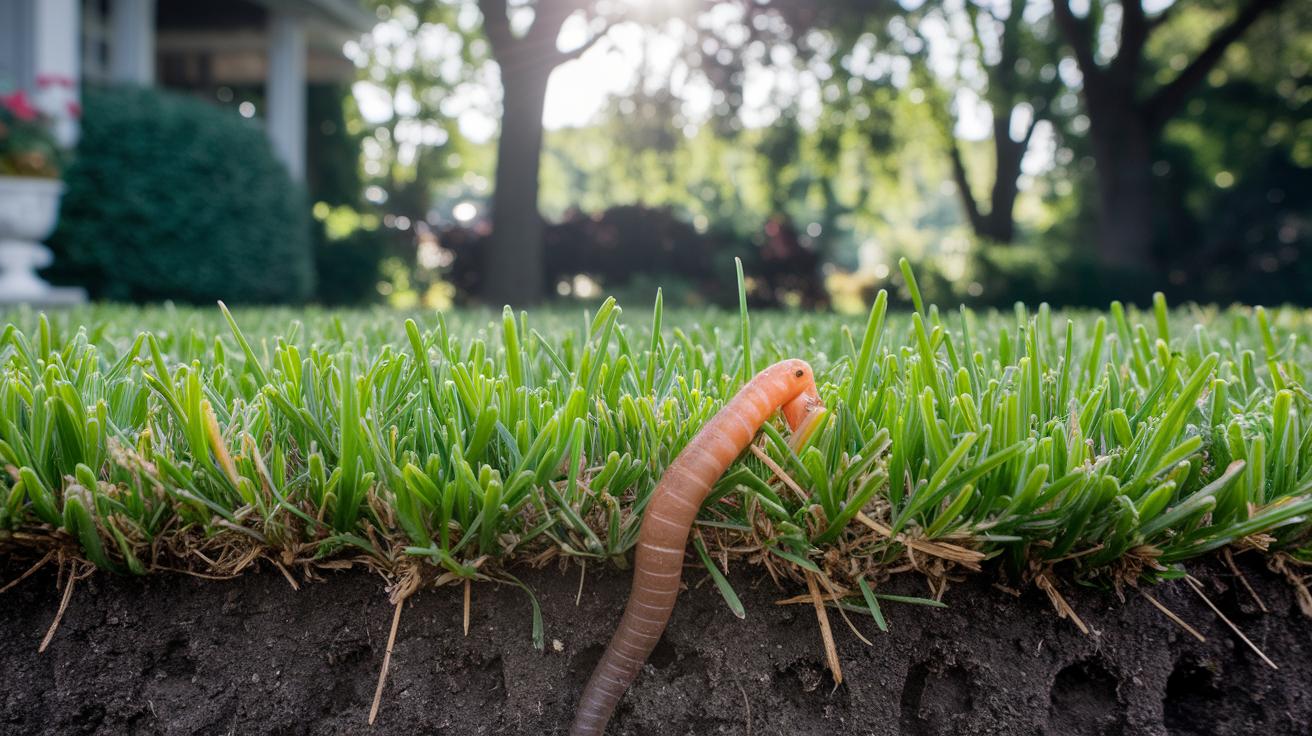
Have you ever felt a spongy layer just under your grass? That’s thatch (a mat of dead roots and stems). When thatch piles up, water pools on top and nutrients can’t reach the real roots. Your lawn ends up thirsty, even right after you water it.
Core aeration (pulling small soil-thatch plugs) is the trick. You’ll hear a soft pop as the machine pulls tiny plugs from your lawn. Those holes let water and fertilizer slip straight into the warm earth. Before you know it, your grass roots are gulping up nutrients and getting stronger.
Don’t sweep those plugs away. They act like a light top dressing, slowly crumbling and feeding the soil. As they break down, microbes (tiny soil helpers that munch on dead bits) go to work on the old thatch. By the way, I once skipped aerating last spring and ended up with patchy spots. Big oops.
And here’s the bonus – earthworms love those open holes. Their tunnels work like little pipelines, pulling air and moisture deep down where roots can stretch out. Your soil feels as light as a sponge, and soon your grass will show off thicker, greener blades.
Best Times for Lawn Aeration: Spring vs. Fall
Aeration (poking tiny holes in soil (the top layer of earth where plants grow) to let air and water in) gives your grass a real boost, you know? Choosing spring or fall changes how green and strong your turf looks. I once tried aerating in winter – oops, not great. Timing really matters for healthy roots and filling in bare spots.
Spring Aeration Benefits
Spring aeration wakes your lawn up fast. The ground is just warming, and those little holes let water and nutrients slide right down. You’ll spot fresh green blades in days as roots gulp early fertilizer (plant food).
Fall Aeration Benefits
Fall is perfect for deep roots. The soil stays warm enough for roots to grow, while top growth slows so grass sends energy below. Poking holes now helps cool-season grasses like Kentucky bluegrass and tall fescue sprout quickly from new seed. Then those roots hunker down before winter, giving you a thick, green lawn in spring.
If you’re in a spot where seasons blend, check your local extension office for the best timing.
Comparing Lawn Aeration Methods: Core, Spike, Slice
So you’re ready to let your grass breathe. Lawn aeration (making little tunnels so air and water reach grass roots) comes in three flavors: core, spike, and slice. Each tool pokes holes differently and at a different depth. That helps you pick what fits your yard size, budget, and the sweat you’re willing to shed.
Core aerators yank out soil plugs (small columns of earth), about 2–4 inches deep and 2–3 inches apart, breaking up tough, compacted ground. It’s like tugging out tiny corks so the warm earth crumbles between your fingers. These machines give deep relief that lasts season after season. But they do weigh a ton.
You can rent a manual or gas-powered walk-behind core aerator for about $65 for four hours or $100 for a full day. Oops, that’s not cheap. But if long-term gains are your goal, it’s worth a thought.
Spike aerators push solid tines (pointed rods) straight into the soil instead of pulling plugs. You might try spike sandals or a rolling model you push with your foot or pull behind a mower. They’re easy on your wallet and simple to use. But over time they can squish soil even tighter, which could make compaction worse.
Slice aerators, sometimes called slit seeders, cut narrow grooves without removing plugs. Those slits give seeds direct contact with soil when you overseed. They only slice the top layer though, so they won’t bust up deep compaction like a core aerator does.
Some folks go for liquid aeration sprays that promise to loosen tight soil with special chemicals. They’re a breeze to apply but often need repeat treatments. And honestly, they don’t build lasting soil structure the way core aeration does.
| Aerator Type | Method | Pros | Cons |
|---|---|---|---|
| Core | Pulls out soil plugs, 2–4 inches deep | Deep relief, lasting benefits | Heavy, rental fee |
| Spike | Punches in solid tines | Affordable, easy | Can worsen compaction |
| Slice | Cuts narrow grooves | Great for overseeding | Shallow reach |
DIY Aerator Choice vs. Professional Lawn Aeration Services

Ever notice your lawn soil feels hard like it’s gasping for air? Aerating helps water, air, and nutrients reach the grass roots.
Renting a core aerator (machine that pulls out soil plugs) runs about $65 for four hours or $100 for a full day. Manual spike tools (hand tool that pokes holes) cost under $50. But they only poke holes, they don’t pull out soil plugs, so they’re less effective.
If you plan to aerate every year or more, that under-$50 tool might pay off after a few seasons. Think about your yard size and how often you’ll aerate.
DIY prep takes some effort.
- Mark underground sprinkler heads so you don’t dent them.
- Mow about ½ to 1 inch shorter than usual.
- Lightly water about 24 hours before you start.
Aerating a 1,000-square-foot lawn with a core aerator takes under 30 minutes. The spike tool can stretch that to an hour or more. That extra time really adds up.
A pro brings the big machine, does the heavy lifting, and drops in tips for after-care. Pricing varies by yard size. You pay for convenience instead of sweating in the sun.
DIY saves on labor fees but means hauling the gear, cleaning up soil plugs, and finding space to store a bulky machine. If your weekdays are jam-packed, a pro frees your time. But if you’re up for a little backyard workout and want to save cash, DIY can feel pretty rewarding.
Post-Lawn Aeration Care: Optimizing Overseeding, Fertilizer, and Irrigation
After you pull those little soil plugs, grab a bucket and stir together seed and compost (decayed organic matter that enriches soil). You can scoop that mix by hand or use a simple hand seeder. Then broadcast it over the bare patches. It’s like tucking seeds into cozy pockets at root level so they won’t roll away.
By the way, have you ever smelled freshly turned soil on a cool morning? Those plugs create perfect spots for seeds to touch the earth right where roots will grow. That close contact helps with overseeding success and gives new grass a head start.
Next, check your soil pH (soil acidity or alkalinity) with a simple test. If your turf is too acidic, sprinkle on some lime. If it’s too alkaline, dust on a bit of sulfur. Both help push minerals deeper into the ground. Then lightly scatter Organic fertilizer for lawn (https://www.backyardsuperstar.com/?p=560) over the aerated area. The microbes in those old plugs will munch away and unlock nutrients fast.
Light watering is key. Keep the seeded spots evenly moist for about 21 to 28 days. I like an early morning spritz and a late afternoon mist to cut down evaporation. Don’t let water puddle up, and please keep off the grass until new blades reach about 2 inches tall. That timing gives another overseeding boost as roots settle in.
Stick with your usual mower height until grass hits 3 to 3.5 inches. Use sharp blades so you slice gently instead of ripping young shoots. Then wait about 10 days before your next cut. This gives seedlings time to grow strong without stress.
Finally, resist the urge to rake up those plugs. They’ll crumble right back into the soil, feeding microbes and boosting nutrient uptake. It’s the last little overseeding boost that helps your turf fill out thick and green.
Final Words
In the action of updating soil with holes for air and water you learned how aeration lifts compaction and fuels root growth.
We saw why pulling plugs helps nutrients dive deeper and thatch layer fade.
You weighed spring vs fall timing and picked the best aerator type for your budget.
Then you scoped out DIY steps and pro service perks.
And you discovered post-aeration care like overseeding and gentle watering.
Those simple moves will spark stronger turf, deeper roots and drought resistance.
Embrace the benefits of lawn aeration and watch your grass glow greener.
FAQ
Is lawn aeration worth it and what are its benefits?
Lawn aeration relieves soil compaction, improves air, water, and nutrient flow, strengthens roots, reduces disease risk, and overseeding fills bare spots for thicker, greener grass.
When is the best time to aerate and oversee my lawn?
The best time to aerate and overseed is fall for cool-season grasses and late spring for warm-season types, letting roots grow strong before extreme heat or cold.
How often should I aerate my lawn?
Aerate your lawn once every year or two, depending on soil compaction and foot traffic. High-traffic areas may need it more often.
What should I do after aerating my lawn?
After aeration, spread seed or fertilizer into the holes, water lightly daily for three to four weeks, and limit foot traffic until new grass reaches about two inches tall.
What tools or aerators are used for lawn aeration?
Core aerators pull soil plugs, spike sandals or rolling tools push tines into the soil, and slicing aerators cut narrow grooves without removing plugs.
What are the drawbacks of lawn aeration?
Drawbacks include rental or service costs, extra prep and cleanup time, and a temporary messy appearance until the soil plugs break down.
Will aeration make grass greener?
Yes—by boosting air and water access to roots, aeration supports better nutrient uptake and stronger, more vibrant turf.
Do I need to hire a lawn aeration service or can I do it myself?
You can hire a professional service for equipment and expertise or rent an aerator and do it yourself to save on labor and gain hands-on experience.


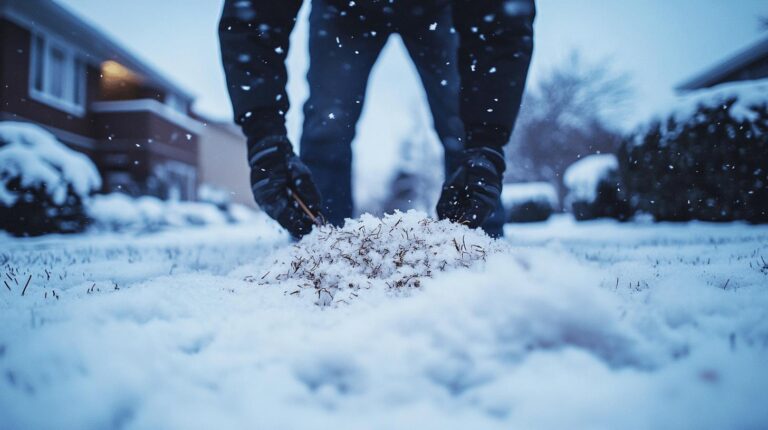

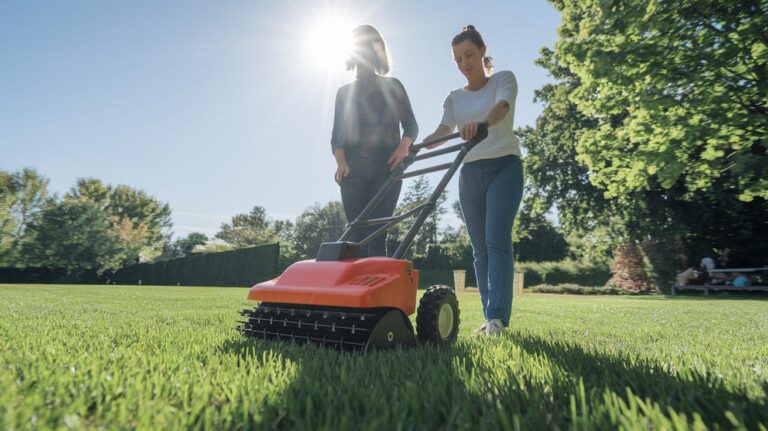
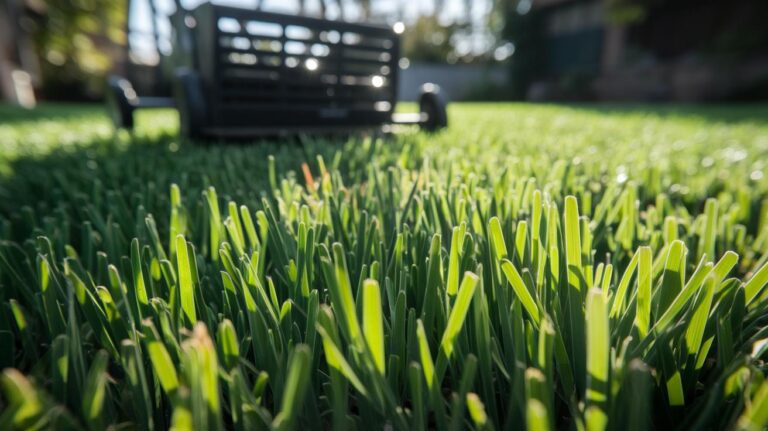
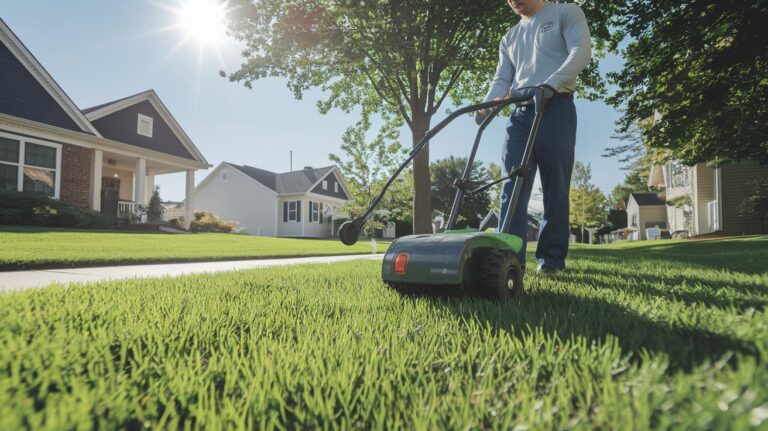
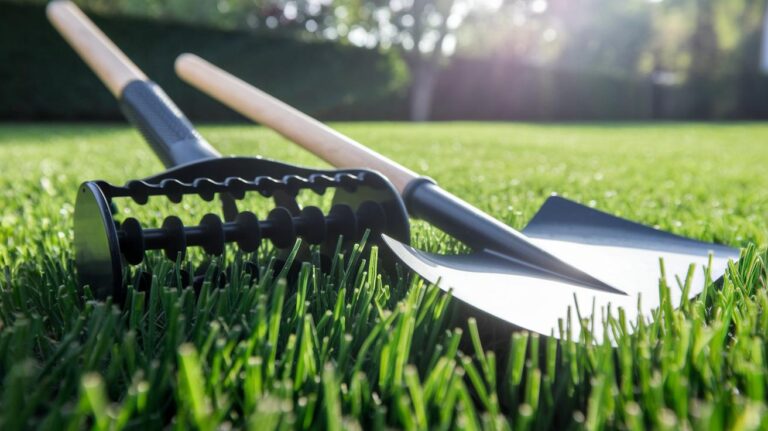
One Comment